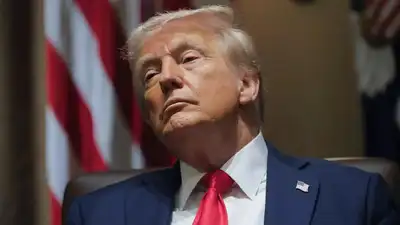The Trump administration is finalizing a new travel restriction plan that would limit entry to the United States for citizens of 41 countries. This includes a “red list” of 11 countries, notably Afghanistan and Bhutan, which would face a complete ban on entry. Countries on this list will be categorically shut out of the US.
However, India and China are not included in any of the three proposed lists.
The Red, Orange, and Yellow Lists
- Red List
The “red list” includes countries whose citizens would be entirely banned from entering the US. This list comprises:
- Afghanistan
- Bhutan
- Cuba
- Iran
- Libya
- North Korea
- Somalia
- Sudan
- Syria
- Venezuela
- Yemen
- Orange List
The “orange list” includes 10 countries such as Russia, Pakistan, and Myanmar. Nationals of these countries will face restrictions on entry but won’t be completely banned. They would only be eligible for specific types of short-term non-immigrant visas, which would require in-person interviews. - Yellow List
A third “yellow list” consists of 20 countries, mainly in Africa and the Caribbean. These nations will have 60 days to address perceived vetting or security deficiencies before they face restrictions. If they fail to comply, they could be moved to the orange or red lists.
Global Reaction and Concerns Over Implementation
This move, an expansion of the Muslim country-specific travel ban from Trump’s first term, has caused shockwaves worldwide. Despite its flaws, the United States remains, as Ronald Reagan once described it, a “shining city on the hill,” and a place that traditionally welcomes immigrants.
Although officials say the proposals are still in the final stages and no decisions have been made, there is widespread panic among prospective immigrants and travelers about when these restrictions will take effect and how they will affect those who already hold valid US visas.
Particular Concerns for Pakistan and Bhutan
Of particular concern is the status of Pakistan, whose citizens have one of the largest diasporas in the US. The New York Times placed Pakistan on the orange list, while Reuters listed it under the yellow list. There was also confusion over why Bhutan appeared on the red list, despite its small size and low profile in international politics.
Additionally, many were puzzled as to why Russia and North Korea, whose leaders have a favorable relationship with the Trump administration, appeared on the yellow list rather than the red list.
Background and Future Implications
These proposals have surfaced in draft form after an executive order issued by Trump on January 20, requiring the State Department to finalize the restrictions within 60 days. The deadline is now just over a week away, heightening uncertainty among affected nations and individuals.
Trump’s first travel ban was upheld by the US Supreme Court but was later revoked by Joe Biden, who called it “a stain on our national conscience” and criticized it for being inconsistent with America’s history of welcoming immigrants of all backgrounds.
During his second presidential campaign, Trump vowed to reinstate the travel ban, citing the need to protect American citizens from individuals who could potentially commit terrorist acts, threaten national security, or exploit immigration laws for harmful purposes.
Read also: https://newsonthego.in/mumbai-itat-rules-in-favor-of-non-resident-taxpayer-in-overseas-income-case/




